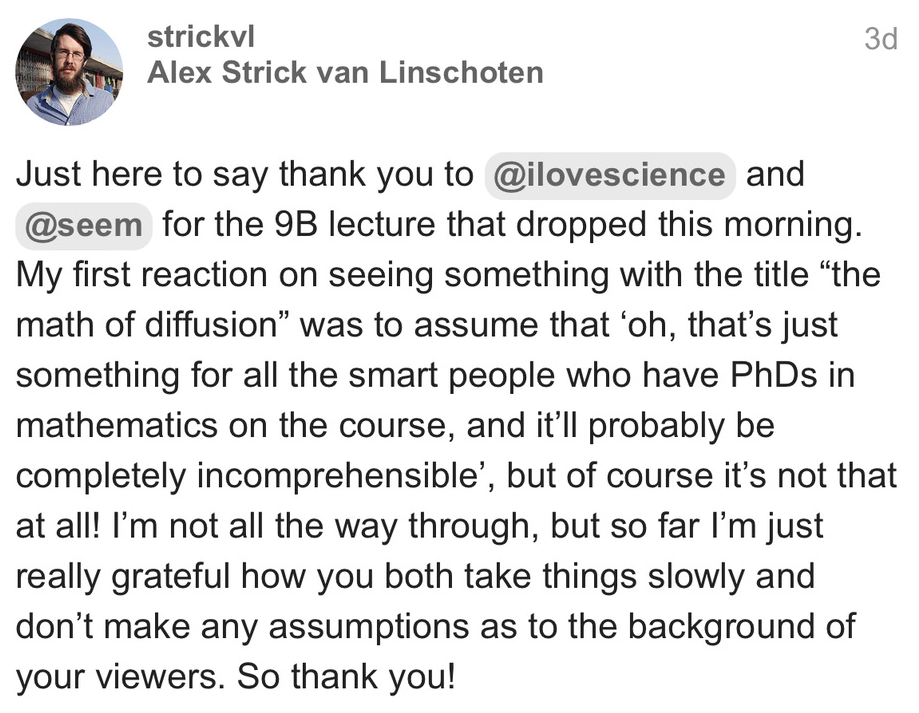Understand the math of diffusion without a PhD
Check out Lesson 9B: Math of Diffusion of fast.ai’s Practical Deep Learning for Coders Part 2, 2022 from the wonderful Tanishq and myself if you want to understand the math of diffusion but feel intimidated by the jargon. You’ll learn about the key equations underpinning diffusion models, with no prerequisites beyond high school math.
What you’ll learn
We walk through the math of diffusion models from the ground up, explaining the insights underlying the key equations in the work of Sohl-Dickstein et al. (2015) that originally discovered diffusion models.
By the end of the lesson you’ll have some understanding of the following key concepts and you’ll know how to recognize and interpret their symbols in research papers: probability density function (pdf), data distribution, forward process, reverse process, Markov process, Gaussian distribution, log likelihood, and evidence lower bound (ELBO).
We also touch on the more recent breakthroughs of Ho, Jain, and Abbeel (2020) which enabled even simpler and more powerful diffusion models.
You can discuss this lesson, and access links to all notebooks and resources from it, at this forum topic.
You don’t need a PhD
Here’s what Alex, a student of the course, had to say about the lesson:

You definitely don’t need a PhD! In fact, the lesson came about because I felt the same way as Alex. I was frustrated at how difficult I found it to understand the math in diffusion papers.
Recorded at fast.ai HQ
Thanks to nudges from Jeremy, we went from an informal conversation, to a talk at the fast.ai unconference, to a recorded lesson – in a span of 4 days! Jeremy was kind enough to let us use his equipment and record at the fast.ai HQ.

Check out the other lesson resources
I’m grateful to be part of this amazing group of people developing fast.ai’s From Deep Learning Foundations to Stable Diffusion. Follow the tweet below to find more lesson resources from the team: Johno Whitaker, Pedro Cuenca, Tanishq Abraham, and of course Jeremy Howard.
I got a special surprise for you all…
— Jeremy Howard ((jeremyphoward?)) October 20, 2022
We just released the first 5.5 hours of our new course "From Deep Learning Foundations to Stable Diffusion", for free!https://t.co/LiUu9HSflG